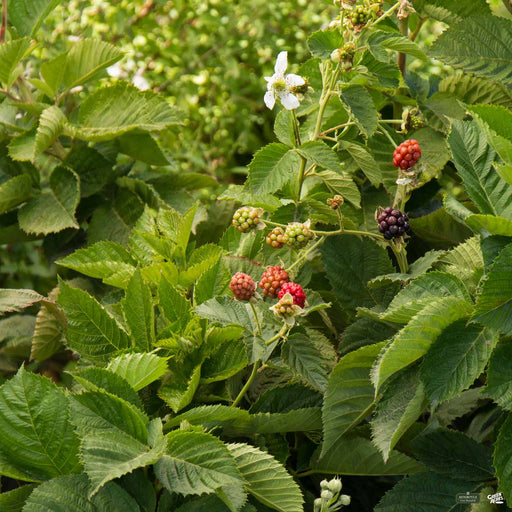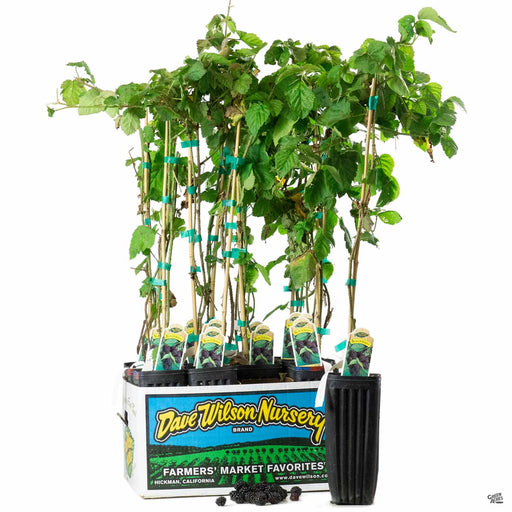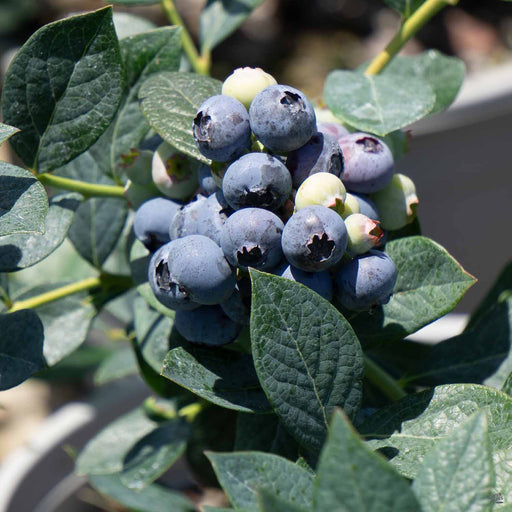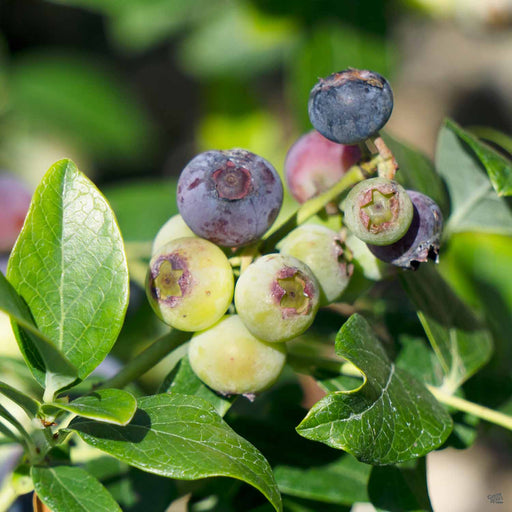Self-pollinating, thornless blackberry grown in Monrovia's customized soil mix for healthy roots. Primo-cane fruiting variety means it fruits on first year growth as well, giving crops early summer all the way into fall. White flowers are followed by red berries that turns black when ripe.
*Monrovia priced higher.
Plant with Trailing Rosemary
Characteristics
-
Landscape Size: 5'-6' tall, 5'-6' wide
-
Light Requirement: Full Sun
-
Water Needs: Moderate
-
USDA Zone: 6a
-
Growth Habit: Upright, Spreading
-
Growth Rate: Moderate
-
Attributes: Deciduous, Attracts Birds, Attracts Butterflies, Fruiting, Edible Fruit
See Green Thumb Guide below for region specific information.
ebstone-organics-surestart,rosemarytrailing,corona-174-forged-bypass-pruner,ebstone-organics-allpurposeplantfood,hestra-robin-synthetic-gloveebstone-organics-surestart,strawberry-albion,ebstone-organics-azaleacamelliaplantingmix,raspberry-shortcake-monrovia,ebstone-organics-azaleacamelliagardeniafood
Green Thumb Guide
Thrives in enriched, well draining, slightly acidic soil. After harvest, prune down older canes that have fruited all the way to the ground, leaving new canes to fruit next year. Remove all dead canes early spring. Feed with an all purpose fertilizer early spring before new growth, and again during summer.
These characteristics apply to the greater Sacramento area and nearby regions.
Live outside of our area? Please check with your local cooperative extension for the best growing practices in your neck of the woods
Visit: UC Cooperative Extension Offices (Opens in new window)
Visit: National County Extension Offices (Opens in new window)
Green Thumb Guide
Thrives in enriched, well draining, slightly acidic soil. After harvest, prune down older canes that have fruited all the way to the ground, leaving new canes to fruit next year. Remove all dead canes early spring. Feed with an all purpose fertilizer early spring before new growth, and again during summer.
These characteristics apply to the North Texas area and nearby regions.
Live outside of our area? Please check with your local cooperative extension for the best growing practices in your neck of the woods
Visit: Texas A&M Extension Offices (Opens in new window)
Visit: National County Extension Offices (Opens in new window)







